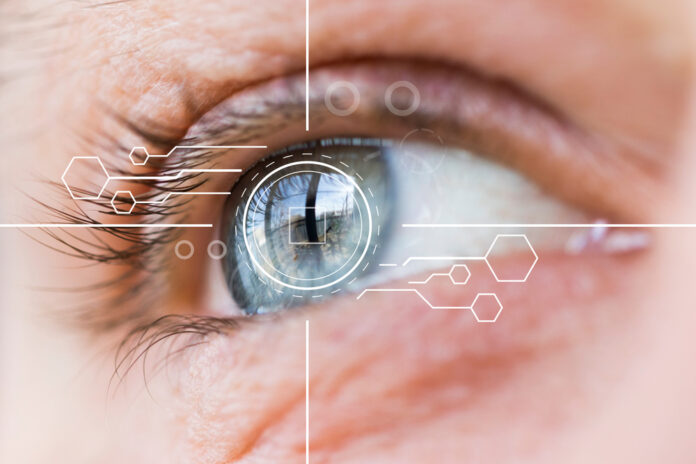Light sensitive pixels and the cameras they make possible have transformed modern life. Cameras are pervasive. Smartphones often have several, streets, shops and businesses — even our homes–bristle with them. Humans have become used to the idea that they are constantly recorded by these devices every time they leave their house and often while they are within it.
But the ubiquity of cameras has limits and one of them is eye tracking. The ability to track the position and angle of the eyeball has a wide range of applications from virtual reality devices to advert tracking to driver safety systems and beyond.
The problem is that placing a camera in front of the eyes tends to block the view. And mounting them further away makes them less accurate, more bulky and often more power hungry because of the extra data processing they require. This has limited their utility in many situations.
Hidden Sensors
What eye trackers need is a way of hiding light sensitive pixels in plain sight.
Enter Gabriel Mercier at The Barcelona Institute of Science and Technology in Spain and colleagues who have built transparent photodetectors that can make cameras more or less invisible. They have tested their device and shown it could enable a new generation of eye tracking devices built into ordinary objects such as spectacle lenses, computer monitors and windows. “The operation and appearance of transparent image sensors present a fundamental shift in how we think about cameras and imaging, as these devices can be concealed in plain sight,” they say.
The technology that makes light sensitive pixels transparent is photodetectors made of graphene-based quantum dots. These devices consist of a layer of graphene — a 2-dimensional sheet of carbon atoms in “chicken wire” formation — covered with dots of lead sulfide. When hit by photons, the dots emit electrons that flow across the graphene sheet to produce a current.
The entire device is essentially transparent because most light passes through graphene and the dots are too small to see. The connecting electronics can also be made largely transparent so that the entire photodetector array transmits up to 95 per cent of the light hitting it.
Another advantage of graphene pixels is that they produce a relatively large current. That means the signal can be transmitted over relatively long distances before it needs amplifying.
Other organic conductors that are light sensitive, produce smaller signals that need immediate amplification. So the amplifying electronics — which are not transparent — must be near the pixels. This takes up space that would otherwise be used to detect photons and also reduces the transparency of the array.
That’s why transparent pixel arrays have yet to work well.
By contrast, Mercier and co say their amplifying electronics can be tucked safely out of the way. That means the array can be printed onto spectacle lenses where it sits directly in front of the eye, without obstructing the view.
To test their device, Mercier and co projected greyscale patterns onto the array and compared the output with that from a conventional image sensor.
They found promising results. For eye tracking, the sensors need a refresh rate of at least 200Hz and the team recorded the device working at more than doubled this rate while producing reliable images. “It is clearly visible that most patterns can be reconstructed by the imaging device,” they say.
They went on to simulate eye-tracking by projecting a black dot onto the array and using the output to track it.
Eye Tracking
That’s interesting work with potentially powerful applications. “Eye-tracking has a wide range of uses, such as detecting schizophrenia, measuring the comprehension of texts or driving experience, while allowing for a better understanding of memory and commercial choices,” say Mercier and co. “Eye-tracking provides a human-computer interface that can allow for the touch and gestureless control of automotive infotainment systems — and is also earmarked as a key enabling technology for omnipresent virtual and augmented reality.”
There are challenges ahead, of course. These arrays lack lenses and so rely on projected images. That might work in close proximity to eyes, particularly since the arrays are sensitive to infrared light which could be projected onto the eye without the wearer being aware.
An alternative is to use single pixel imaging techniques, which form images from randomized light falling on a single photodetector. This requires high refresh rates for high resolution images. But Mercier and co say that in theory, their device could work at a refresh rate of 20,000 frames per second. Single pixel imaging also requires significant computational power, but this could be done well away from the field of view.
Either way, transparent cameras have significant potential. Expect to see them — or not — in the not too distant future.
Ref: Semi-Transparent Image Sensors for Eye-Tracking Applications : arxiv.org/abs/2403.08297
Source : Discovermagazine






